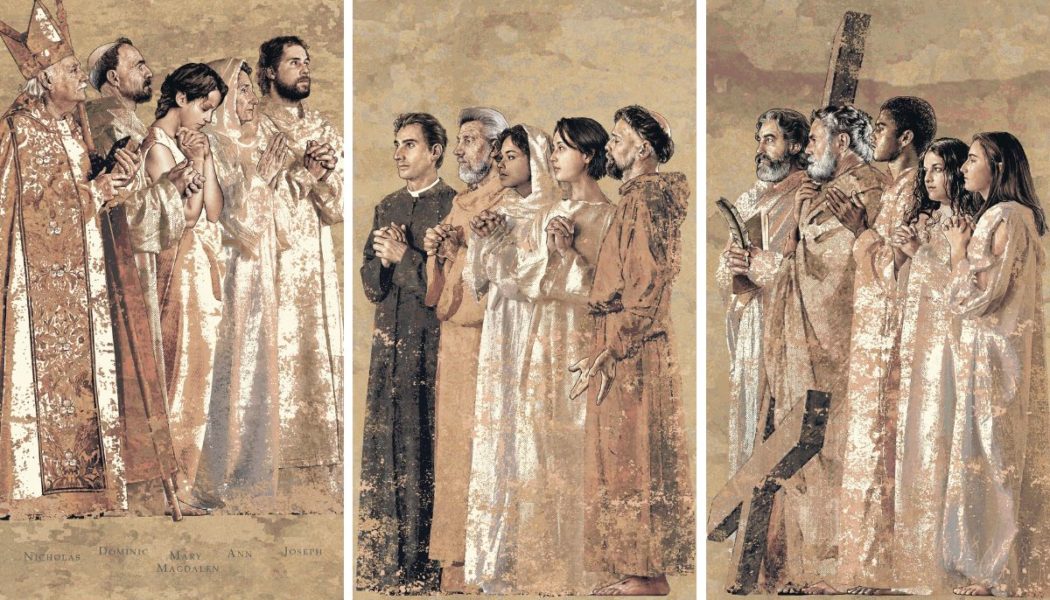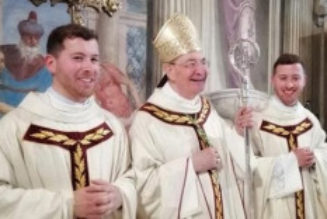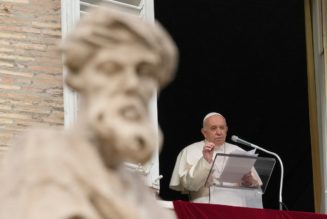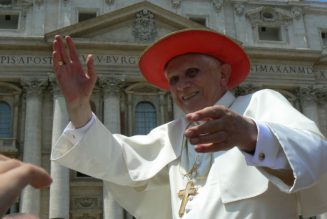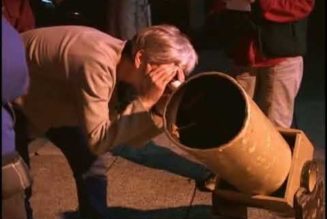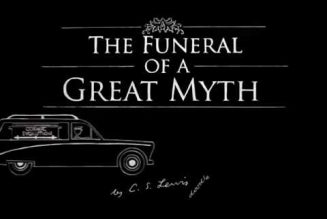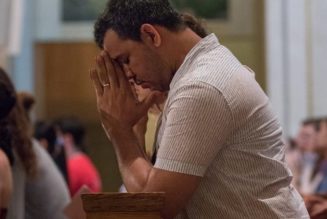The Church honors her saints on Nov. 1, All Saints’ Day, and reminds us that they can be powerful intercessors on our behalf as we journey toward heaven.
The Catechism of the Catholic Church says of the intercession of the saints, “Exactly as Christian communion among our fellow pilgrims brings us closer to Christ, so our communion with the saints joins us to Christ, from whom as from its fountain and head issues all grace, and the life of the People of God itself” (957).
The Church honors her saints on Nov. 1, All Saints’ Day, and reminds us that they can be powerful intercessors on our behalf as we journey toward heaven.
Catholic churches the world over are replete with images of the saints to remind us of the important role they should play in our spiritual lives.
One of the most impressive and extensive depictions of the saints in the United States can be found at the Cathedral of Our Lady of the Angels in downtown Los Angeles.
Painter John Nava of Ojai, California, was selected to create three groups of tapestries to adorn the cathedral’s walls, the most prominent of which are the Communion of Saints tapestries that line the south and north walls of the nave and depict 136 saints and blesseds from around the world. Many are canonized saints, but 12 untitled figures can be found among them, which the cathedral website explains, “represent the many anonymous holy people in our midst.” All of the figures direct visitors’ gaze, it continues, “to the light of the great Cross-window above the Altar where the Eucharist is celebrated.”
The saint tapestries include males and females of all ages, races, occupations and vocations throughout the world and from every age of the Church.
Nava was able to create the likenesses of more recent saints, such as Mother Teresa, from photographs, but many saints from earlier eras were created from models in costume who included members of Nava’s family and friends and members of the general public recruited by a Hollywood casting director hired to assist with the project.
Nava explained to the Register, “I wanted the figures to not be stylized renderings, but figures drawn from real people, so visitors could say, ‘I know someone like that.’”
Models were photographed, and Nava painted their images and then sent the completed work to a weaver in Belgium, who used the process of electronic Jacquard weaving to create the tapestries, some of which are as high as 48 feet tall. All had to be in place for the 2002 opening of the cathedral, overseen by founding pastor Msgr. Kevin Kostelnik.
The tapestries have since become a favorite of visitors amid the cathedral’s modern design. Nava said the “tapestries offer a warm human connection with which people could connect.”
Msgr. Kostelnik recalled to the Register that he referenced the tapestries when speaking to young people. He said, “The saints show us how we are to live our lives. I ask, ‘How are you living and modeling the Christian life today?’”

Monsignor’s favorite image is one of St. Joseph, modeled after a young man the casting director discovered at an Ojai coffee shop. “Most of our St. Joseph images depict an old man with flowing white hair, but our St. Joseph is a young man who displays both ruggedness and tenderness,” Msgr. Kostelnik said.
Another saint that brings him special memories is an image of St. Emygdius, patron for protection against earthquakes. The saint was modeled after a young acquaintance of Nava’s who was severely injured in a car accident and is now a paraplegic who uses an electric wheelchair. Nava explained, “I’m not a theologian, and I want to be inclusive. I wondered if I should have images of saints in wheelchairs or with crutches and other handicaps.”
He discussed it with the modeling subject, who asked that he be depicted standing, asking, “Do I have to be in this chair for all eternity?”
After the cathedral opening, Msgr. Kostenik gave the man a private tour of the cathedral tapestries and recalls how he was moved to tears to see his image depicted standing: “It gave him hope that one day in heaven he would be healed.”
Nava’s favorite image is a new one installed in the sanctuary just a few years ago at the request of Archbishop José Gomez that depicts Our Lady of the Angels, the namesake of the cathedral. The artist added that his work on the tapestries was the first religious art he ever created, “and I am honored I was selected to do it. I believe it is the most important and beautiful work I’ve ever done.”
Msgr. Antonio Cacciapuoti, who was appointed pastor of the cathedral parish this year, especially likes a tapestry depicting a mother and baby, with two small children nearby, none of whom are identified. The depiction reminds him that “people of every walk in life are called to holiness.”
He says the tapestries are the most commonly commented on work of art at the cathedral and play an essential role in reminding the viewer that “the ultimate destination of the faithful Christian is not merely the grave, but heaven.”
Msgr. Kostelnik added, “Part of the great tradition of our Church is the witness of the saints, and we are called in our generation to join them in following Christ. When visitors see their images hovering above them looking toward the cathedral’s centerpieces of the cathedra, or bishop’s chair, and altar, which represents Christ, we are reminded that we are a Church of both heaven and earth.”
Join Our Telegram Group : Salvation & Prosperity
